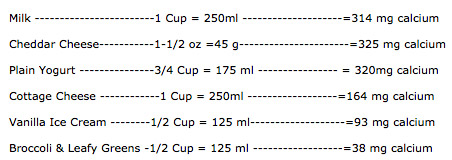Osteoporosis Treatment
The doctors at Cummings Chiropractic Family Wellness diagnose and treat patients with osteoporosis on a regular basis. If you have reason to suspect you may suffer from this condition please complete our questionnaire and bring it to your appointment at our office. If needed, our doctors will order the appropriate test (BMD) to determine your bone density and ensure your condition is handled appropriately.
 What is Osteoporosis?
What is Osteoporosis?
Osteoporosis is a natural aging disease in which bones become thin and fracture easily in normal day to day activities. It can cause the vertebrae of the spine to collapse which results in decreased height and increased curvatures called ” kyphosis” or “widow’s hump.”
Osteoporosis is defined as “a disease characterized by low bone mass…leading to enhanced bone fragility and a consequent increase in fracture risk” (National Institutes of Health, consensus development conference, 1991)
Signs and Symptoms
The first sign or symptom of Osteoporosis is usually cramping in the calves or feet. The next sign is mid to lower back pain. Unfortunately, the osteoporotic condition may be well advanced by this point. It cannot be picked up by a regular x-ray until 30% of the bone is lost. A BMD (bone mineral density) test is required to diagnose and appropriately monitor the condition.
Understanding Osteoporosis
Bone is constantly being created by cells called osteoblasts and constantly being torn down by cells called osteoclasts. Osteocytes are the cells that remodel bone for the re-utilization of the calcium when it is required. If this process is altered…osteoporosis will develop.
Why Be Concerned?
- Significantly increased risk of hip, spine and forearm fractures.
- By age 70-80 1/3 women and 1/6 men will suffer a hip fracture.
- Up to 20% of hip fracture victims die within one year.
- 50% of victims are incapacitated and unable to return to unassisted living.
How to Identify Your Level of Risk
STEP 1: Be evaluated for your risk by a medical professional. X-rays and a DEXA (bone density) scan are required if you are determined to be at risk. Immediate action is required. The doctors at Action Chiropractic & Sport Therapy can send you within the same building to have the test performed.
STEP 2: Consult a medical professional for detailed nutrition advice (to improve bone density), exercise prescription (to improve balance and prevent falls thereby lowering risk of hip fractures) and lifestyle advice (to slow existing bone loss).
STEP 3: Consider prescription options.
How Does Chiropractic Help
Osteoporosis leads to altered posture:
- Increased stress on muscles causes spasms
- Joint pain inevitably occurs
How is the Pain Treated
- Electronic machines to massage and relax muscles
- Low force techniques to restore proper joint motion
- Posture advice
- Nutrition advice, exercise prescription and lifestyle advice.
How to Lower Your Risk
- Prevention from an early age is Critical.
- Maintain adequate calcium (1000-1500 mg/d total), magnesium (500-750 mg/d) and vitamin D (400-800 IU/d total) intake. Many people will have to supplement in order to obtain adequate amounts to prevent bone loss.
- Engage in regular (40-60 minutes per day, at least 3x/week) weight bearing exercise. Also use weight resistance training to build peak bone mass.
- Consider taking a daily multivitamin to ensure adequate trace minerals such as zinc, copper, manganese and boron.
- Limit intake of alcohol, caffeine, protein and phosphates (soft drinks) and try to stop smoking.
Calcium Recommendations
Daily Calcium Requirement Based Primarily on Age
| Population | Elemental Calcium Required (mg) |
| Infant to 6 months | 400 |
| 6 months to one year | 600 |
| Children | |
| 1-5 years | 800 |
| 6-10 years | 1200 |
| Adolescents/Young adults | 1500 |
| Men 25-65 | 1000 |
| Over 65 | 1500 |
| Women 25-50 | 1000 |
| Over 50 | 1500 |
| Pregnant and nursing | 1500 |
Dietary Sources of Calcium

It is also important to know that the amount of calcium required to give you elemental calcium differs from one type to another (e.g. 1250 mg of calcium carbonate will give you 500 mg of elemental calcium while it takes 5000 mg of calcium gluconate to give you the same 500 mg of elemental calcium). The elemental calcium is the number we are concerned with for absorption purposes. When choosing a supplement, ensure that it is ELEMENTAL CALCIUM.
The final factor to consider is what else is in the supplement in addition to calcium. To maximize absorption vitamin D (400 IU per serving) must be included in the supplement. Magnesium must also be present with the calcium for proper conversion to bone in the body. The amount of magnesium required is a subject of debate. Too much magnesium will trigger diarrhea. Without enough magnesium the calcium component of the supplement may cause constipation.
For best overall quality the doctors of this clinic advise CAL 6 MAG by Douglas Labs.
Factors that Inhibit Calcium Absorption
We Can Help
The key to preventing osteoporosis is early diagnosis. Speak to our doctors today. Contact Cummings Chiropractic Family Wellness today to schedule an appointment!
CONTACT US »

